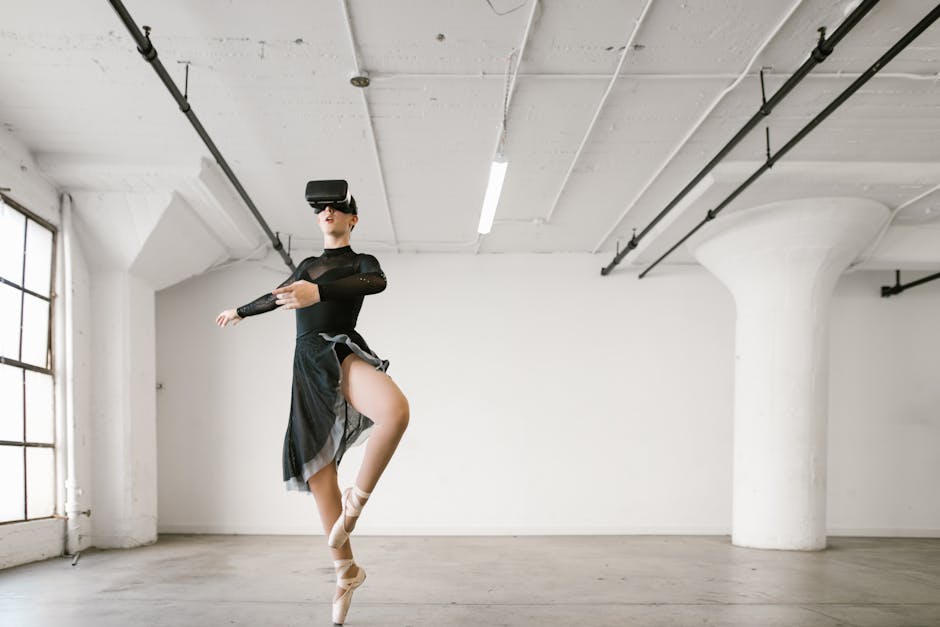In today’s rapidly evolving digital landscape, the lines between traditional film and digital media are blurring, creating a dynamic new era in storytelling. As a passionate observer of this transformation, I’ve seen how filmmakers and digital creators are harnessing technology to push the boundaries of narrative and visual expression. This convergence isn’t just a trend; it’s reshaping how we experience stories across various platforms.
From immersive VR experiences to interactive web series, the fusion of film and digital media offers endless possibilities for creativity and engagement. It’s an exciting time for both creators and audiences, as we witness the birth of innovative formats and storytelling techniques that were once unimaginable. Let’s dive into how this synergy is revolutionizing the art of storytelling and what it means for the future of entertainment.
The Evolution of Storytelling
Storytelling has undergone significant changes, driven by the convergence of traditional film and digital media. This transformation has broadened the scope of how stories are told and experienced.
1. From Traditional Film to Digital Platforms
Filmmakers once relied solely on cinema and television to showcase their work. However, digital platforms like YouTube, Netflix, and social media have expanded their reach. In 2022, Netflix had over 220 million subscribers globally, offering unprecedented distribution opportunities.
Digital platforms support diverse formats, from short films and web series to full-length feature films. For instance, YouTube creators produce content ranging from bite-sized educational clips to in-depth documentaries. This variety allows creators to experiment with new forms and lengths, tailoring stories to specific audiences.
2. The Impact of Technology on Narrative Techniques
Advances in technology have revolutionized storytelling methods. High-definition cameras, CGI, and editing software have enabled more complex and visually stunning narratives. For example, CGI made it possible to create entire worlds in films like “Avatar,” drastically changing the visual storytelling landscape.
Interactive storytelling is another innovation. Video games and interactive films, like “Black Mirror: Bandersnatch,” offer viewers the ability to influence the narrative. This engagement deepens the audience’s connection to the story, making the experience more immersive.
Virtual Reality (VR) and Augmented Reality (AR) have also emerged as powerful storytelling tools. VR experiences like “TheVRMuseum” transport users to different eras and environments, offering an immersive way to explore stories that traditional media can’t match.
By leveraging digital media platforms and technological advancements, modern storytellers are continually pushing the boundaries of narrative techniques. The evolution reflected in these changes reveals an exciting future for storytelling.
Understanding Digital Media

Digital media encompasses internet-based content, social media, and digital platforms that enable new forms of storytelling. This medium provides innovative ways to engage audiences through video, audio, and interactive elements.
Characteristics of Digital Storytelling
Digital storytelling uses multimedia tools to create unique experiences. It’s flexible, combining text, images, videos, and audio. For example, online articles often incorporate infographics and embedded videos to enhance the narrative. The use of hyperlinks for deeper context is another feature. Digital storytelling adapts across various devices and platforms, ensuring a wide reach.
Interactive and User-Controlled Content
Interactive content allows users to participate in the narrative. In video games, players’ choices affect the storyline, creating personalized experiences. Websites with interactive elements, such as quizzes and polls, engage users in active participation. Platforms like YouTube offer user-controlled content where viewers choose what and when to watch, enhancing engagement.
Highlights of Convergence in Cinema
The convergence of film and digital media is revolutionizing storytelling methods, enabling cinematic experiences to reach new heights. This section highlights notable examples and practices where digital media has significantly impacted cinema.
Notable Films That Embodied Digital Innovation
Several films stand out for their innovative use of digital technology.
- Avatar (2009): Directed by James Cameron, “Avatar” broke new ground with its use of 3D technology, advanced motion capture, and CGI to create the lush, alien world of Pandora. Its visual effects set a new standard in the industry.
- Gravity (2013): Alfonso Cuarón’s “Gravity” utilized groundbreaking digital effects to depict space in a hyper-realistic and immersive manner. The film’s long continuous shots and realistic zero-gravity visuals were achieved largely through digital innovation.
- The Lion King (2019): Directed by Jon Favreau, the 2019 remake of “The Lion King” employed virtual reality (VR) in its production, allowing the filmmakers to navigate and compose shots within a digital environment. This technique merged live-action filmmaking skills with digital characters.
How Directors Are Using Digital Media
Directors leverage digital media to push creative boundaries and enhance storytelling.
- Pre-visualization: Modern directors use pre-visualization software to plan complex scenes digitally before shooting. This technique helps in visualizing scenes, blocking actors, and planning camera movements.
- Hybrid Production Techniques: Directors like Christopher Nolan combine practical effects with digital enhancements to create impactful visual narratives. For instance, “Inception” (2010) and “Tenet” (2020) adeptly blend practical effects with CGI.
- Interactive Storytelling: Directors embrace new formats like interactive films. “Bandersnatch” (2018), part of the “Black Mirror” series, directed by David Slade, allows viewers to make choices that affect the storyline, showcasing a unique convergence of traditional and digital storytelling.
These advancements illustrate the profound impact digital media has on modern cinema. By integrating digital tools with traditional filmmaking, directors create visually stunning and narratively innovative works.
Future Trends in Film and Digital Media
Emerging technologies are shaping the future of film and digital media, influencing storytelling methods and audience engagement. Here are some trends that define the new era in storytelling.
Virtual Reality and Augmented Reality in Storytelling
Virtual reality (VR) and augmented reality (AR) are transforming how stories are told and experienced. Filmmakers use these technologies to create immersive narratives, with VR allowing viewers to explore cinematic worlds in a 360-degree view. Examples include “The Invisible Man VR” and “Wolves in the Walls,” where users navigate through story environments almost as participants. AR, in contrast, overlays digital enhancements on physical spaces, seen in apps like “AR City” and installations like “The Walking Dead: Our World.” Both VR and AR enrich storytelling by adding layers of interactivity and engagement.
Predictions for the Next Decade
The next decade promises significant advancements in film and digital media. Artificial intelligence (AI) will play a crucial role in scriptwriting, editing, and audience analysis, streamlining production processes and tailoring content to viewer preferences. Blockchain technology might revolutionize distribution and intellectual property protection, ensuring secure, transparent transactions and copyright management. Moreover, advancements in 5G connectivity will enhance streaming quality, allowing real-time collaboration and high-definition experiences. Visual effects (VFX) will continue evolving, with techniques like deepfake and AI-generated imagery becoming mainstream in content creation. These trends will redefine the boundaries of storytelling, merging technology and creativity seamlessly.
Conclusion
The convergence of film and digital media marks a transformative era in storytelling. With advancements in VR and AR, narratives have become more immersive and engaging. Emerging technologies like AI and Blockchain promise even more innovation in the coming years. As technology continues to evolve, the boundaries of storytelling will expand, offering creators unprecedented opportunities to captivate audiences in ways we never thought possible. This new era is not just about adopting new tools but about reimagining the very essence of how stories are told and experienced.

 Jasmine Wellish is a key contributor at Info Wave Circle, known for her insightful articles and creative approach to technology and societal issues. With a deep passion for innovation and a knack for storytelling, Jasmine plays a crucial role in communicating the vision and achievements of Info Wave Circle to a broader audience.
Since joining the team, Jasmine has been instrumental in crafting compelling content that highlights the transformative potential of technology. Her work not only informs but also inspires the Info Wave Circle community and beyond. Jasmine’s dedication to exploring new ideas and her ability to convey complex concepts in an engaging manner make her an invaluable asset to the organization’s mission of fostering innovation and societal progress.
Jasmine Wellish is a key contributor at Info Wave Circle, known for her insightful articles and creative approach to technology and societal issues. With a deep passion for innovation and a knack for storytelling, Jasmine plays a crucial role in communicating the vision and achievements of Info Wave Circle to a broader audience.
Since joining the team, Jasmine has been instrumental in crafting compelling content that highlights the transformative potential of technology. Her work not only informs but also inspires the Info Wave Circle community and beyond. Jasmine’s dedication to exploring new ideas and her ability to convey complex concepts in an engaging manner make her an invaluable asset to the organization’s mission of fostering innovation and societal progress.
